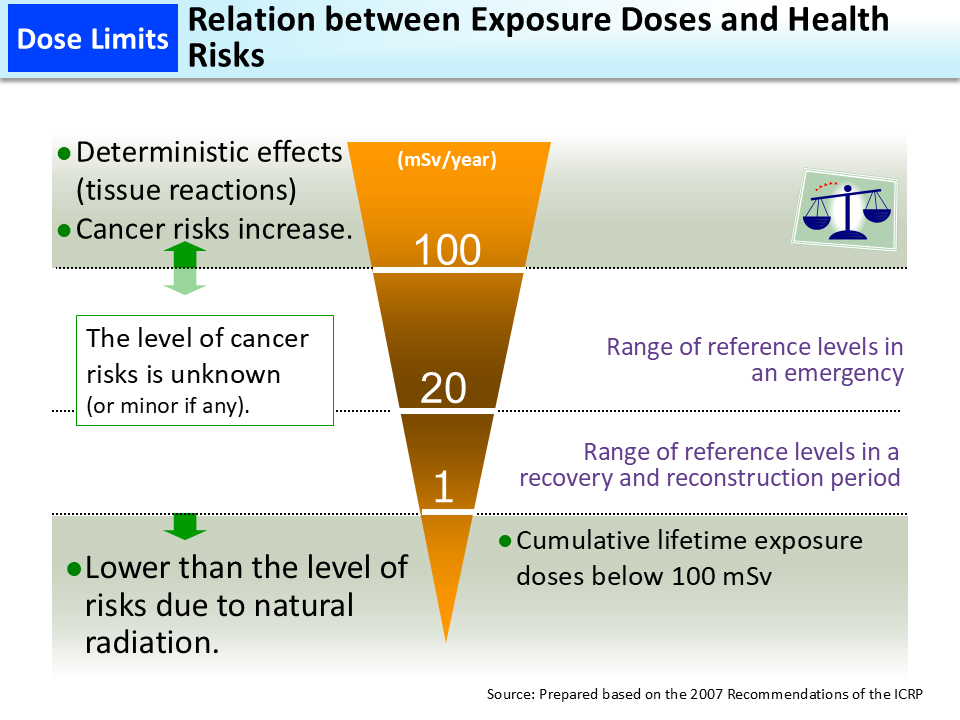Relation between Exposure Doses and Health Risks
There is scientific evidence for the fact that radiation doses of 100 to 200 mSv or over in a relatively short time increase deterministic effects (tissue reactions) and cancer risks. Therefore, in an emergency due to a radiation accident, the initial reference level is set to avoid annual exposure doses of 100 mSv or over in order to prevent serious physical disorders. When the situation improves as the accident is brought under control and there is almost no one who receives a high dose exceeding the initial reference level, a new lower reference level (such as 1 to 20 mSv per year) is set to curb increases in risks of any possible cancer in the future, thereby further promoting exposure dose reduction (p.164 of Vol. 1, “Exposure Situations and Protection Measures”).
As the standard limit in normal times, 1 mSv/year is adopted. As a result, some misunderstand that radiation exposure exceeding 1 mSv per year is dangerous or that they may be exposed to radiation up to that level. However, dose limits do not represent the threshold dividing the safety and the danger.
It is not that radiation exposure up to 1 mSv per year is permissible. Principally, radiation exposure should be reduced as low as practically achievable in light of various circumstances.
(Related to p.117 of Vol. 1, “Relationship between Solid Cancer Deaths and Doses”)
- Included in this reference material on March 31, 2013
- Updated on March 31, 2021

